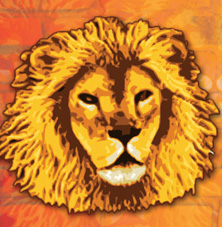 It’s pushing midnight, and you’re luxuriating in the bubbly, percolating riddims of DJ Ripley’s roots reggae and classic dancehall set on the street level of San Francisco’s Club Six. However, though she’s undoubtedly serving up a spot-on selection of classic island sounds, it’s not exactly why you came, and you’re starting to get itchy for some serious pressure.
It’s pushing midnight, and you’re luxuriating in the bubbly, percolating riddims of DJ Ripley’s roots reggae and classic dancehall set on the street level of San Francisco’s Club Six. However, though she’s undoubtedly serving up a spot-on selection of classic island sounds, it’s not exactly why you came, and you’re starting to get itchy for some serious pressure.
And that’s when it happens: the concrete floor—seemingly so solid and utterly inviolable—begins to vibrate in a steady, slow pulse. You feel it in your feet and then in your bones. You can’t hear anything but Studio One horns and overloud club conversation in this room, but you can definitely sense it: something serious is going on in a world down below, and Surya Dub—a monthly club night that celebrates “global dubwize vibes and dread bass culture”—is officially on.
You find that the velvet ropes blocking the stairways to the “Sub Hz Den” have been removed. You follow the crowd into the basement, where Kush Arora is rolling brisk dhol drums over slowly oscillating shockwaves of bass, while an Indian MC voices over the beats in a convincing imitation of Beenie Man. Over the next hour or so, the room fills with a surprisingly gender-balanced and racially mixed crowd of music lovers and scene spotters, all dancing in the dim, blood-red light, and the air, thick with dread bass juju, flows over you like warm syrup.
Launched earlier this year by a collective of SF-Bay-Area DJs including Maneesh The Twister and Kid Kameleon, Surya Dub (visit www.suryadub.com or see the online radio show at desihits.com/channel/world) explores the seemingly unlikely intersections between breakbeat, dub, dubstep, dancehall, reggae, ragga jungle, hip hop, and bhangra. In one Surya Dub set, you might hear a selection of tracks by Mathhead, Tigerstyle, E-40, Modeselektor, Dizzee Rascal, Kode9, and a bhangrafried remix of Cutty Ranks (featuring Kobra Khan)—and find that its unprecedented recontextualization of roots music and future electronics unfolds an entirely new understanding of rhythm, riddim, sound, and motion.
Of course this concept is too strong to be limited to San Francisco. Over in New York City, a sibling monthly party called Sub Swara (www.myspace.com/subswara) launched at approximately the same time as Surya Dub. It also promotes the intercourse between and mutation of dubstep, dancehall, and desi musical styles, and resident DJs from the two clubs frequently fly cross-country to perform guest spots at each other’s events.
“Something serious is going on in a world down below, and Surya Dub is officially on.”
All of this can be tied into an interest in global beats and international bass that’s spreading virulently from continent to continent, and the primary vectors of infection are MP3 blogs, tastemaking DJs, and visionary musical artists. In some cases, this movement takes the form of extravagantly conceived club nights such as Surya Dub, although they may provide slightly different palettes of beats—not so much desi and dubstep, perhaps, but maybe a lot more Detroit ghettotech and B’more bounce.
The focus is always on the perfect blend of stripped-down, streetwise beats and thunderous, bonecrushing bass, but with just enough touch of technology to make
you feel as though you were grooving to the exotic call of the future, even as
your hips are gyrating on an otherwise nondescript dancefloor. The musical styles that this internationalist scene draws together seemingly can come from anywhere—Trinidadian soca, Brazilian funk carioca, Chicago juke house, Puerto Rican reggaeton, UK grime, and so on—and its champions, DJs like Kid Kameleon or musicians like Montreal’s Ghislain Poirier, are experts at blending it all together in unforgettably appealing ways.
Consider the stripped-down, dark, banging beat of kuduro, a relatively new electronic street dance music variant out of Angola. An unstudied listener might assume this savage-sounding stuff is funk carioca straight out of Rio De Janeiro, as the style is somewhat similar (shouty Portuguese rapping over crude synthesizer beats), but the rhythm is more of a strict four-to-the-floor deal that’s more analogous to techno or breakbeat than funk carioca’s Miami-booty-bass-derived hip-hop bounce.
Kuduro began drawing interest among the club music intelligentsia in early 2006, perhaps after world-music tastemakers like DJ/Rupture and Diplo began slipping it into their sets and championing outfits like the Lisbon-based Buraka Som Sistema, a body-rocking electronic dance band whose debut album From Buraka To The World (Enchufada/Modular, available on iTunes) features a strong kuduro influence.
By September 2006, kuduro songs were popping up among dubstep, dub, and techno tracks in clubs from Berlin to Toronto. Eventually it went full circle: kuduro beats are one of the many influences (along with nearly all the other musical styles mentioned in this column) on the tracks in M.I.A.’s followup album, Kala (Interscope).
The odd thing about this is that as of this writing, there’s still only one easily available sampler of the unleavened kuduro sound available to most of us in the developed
world, and that’s the excellent Kuduro Sound System (Frykawa), a comp curated
by Frederic Galliano, the celebrated French DJ, producer, and world-music promoter. It came out in Fall 2006.
You can bet that the majority of the rest of the kuduro being “spun” by hipster beatmeisters in the developed world’s subterranean nightclubs was probably being obtained via P2P means. But that’s how world music culture spreads in these post-global days: encoded in the eternal zeoes and ones, spun across the wireless ether, and beamed straight into our brains via our beloved little earbuds.
-Matt Ness
Matt Ness is the man behind “moebius-rex,” one of the most widely respected music blogs running. Visit it at: moebius-rex.livejournal.com.
